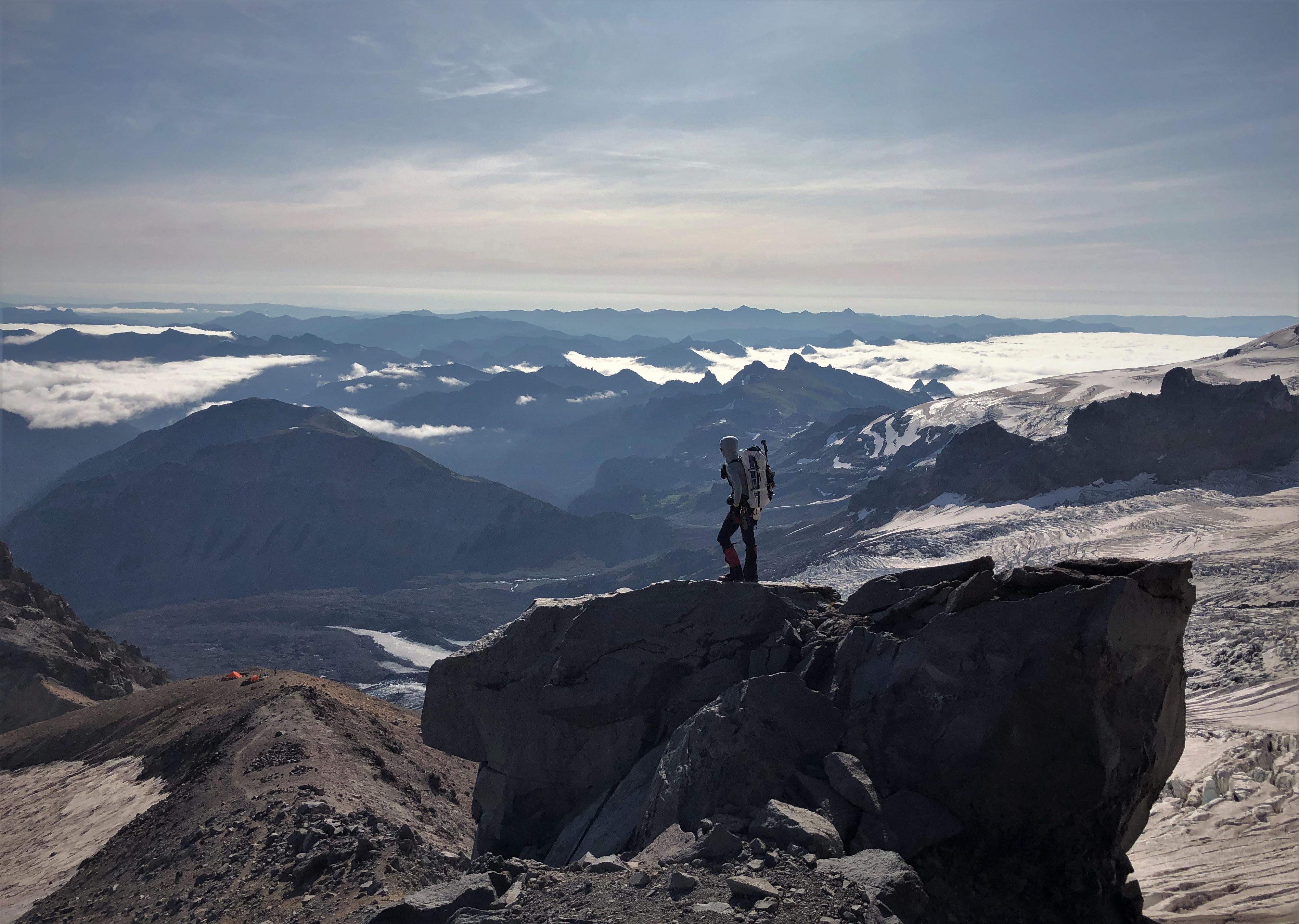
A mountaineer pauses to take in the view as he descends Mount Rainier.
Ian McCluskey
During the Great Depression, when the economy tanked and thousands suddenly found themselves with more time on their hands than money, there was a boom in outdoor recreation.
The federal government built campgrounds, trails and backcountry shelters to encourage people to get outside and take advantage of the vast national forests and parks.
Today, many of those campgrounds and day-use trails are temporarily closed.
In response to the health risks of the new coronavirus, the Oregon Parks and Recreation Department, the National Park Service and the U.S. Forest Service have shut down Pacific Northwest campgrounds and canceled reservations to backcountry cabins, yurts and lookouts. The ski resorts ended their season early.
But with the warming spring weather of last week, these closures didn't stop thousands from heading to the coast or hitting the slopes, cited by government leaders in the decision to make many of these closures.
It seems no one is arguing with the closing of campgrounds, but there’s one area currently still open, and open for debate: What about the backcountry?
Related: Is It Still A Good Idea To Enjoy Oregon's Outdoors?
The term "backcountry" refers to natural areas that are characterized by their remoteness and challenges in accessing them. By definition, backcountry areas are not the developed camping and day-use areas that are closed now, but rather the remote areas, like federally designated wilderness areas, which are marked by limited or non-existent facilities, limited or no road access. They are typically many hours from definitive medical care should an accident occur.
"It seems that best practice for backcountry travel has changed in 2020," writes Peter Benton on the blog Backcountry Skiing in Canada. "Turns out, the safest way to recreate in the backcountry these days is to not. Stay home. Switch gears. Find a new focus."
With the recent closing of ski resorts due to the coronavirus, Colorado’s Rocky Mountains saw an onslaught of backcountry recreation, causing the sheriff’s department of San Juan County to prohibit out-of-town skiers and discourage locals from accessing popular backcountry areas.
In California’s Inyo County in the Sierras, high-risk outdoor activities that could result in a rescue are prohibited. The ban includes backcountry skiing and climbing.
In the mountains of British Columbia, Avalanche Canada and Whistler Search and Rescue have asked their government officials for a ban on backcountry recreation.
Closer to home, Portland Mountain Rescue has called for people to make “conservative risk-management choices.”
“This is no time to be skiing off the summit of Hood or Adams,” PMR said. “In fact, it would be better if you stayed off technical mountaineering routes altogether.”
Backcountry rescue groups like PMR are concerned about what rescue operations will look like with the current risks of the coronavirus.
“If you get hurt in the backcountry during the COVID-19 pandemic, many good people and, by association, their families will have to assume unfortunate infection risks to save you,” PMR said. “Your medical care will also place additional burden on medical resources already stretched to the limit.”
They also point out that the recommended personal protection equipment is not feasible in backcountry settings, and social distancing protocols are impossible to maintain in a rescue situation.
Inherent to our connection to wilderness is that it’s a place we can get away, get back to nature and find solace in isolation.
“The mountains are calling and I must go,” John Muir wrote. I wonder what he’d say right now.
